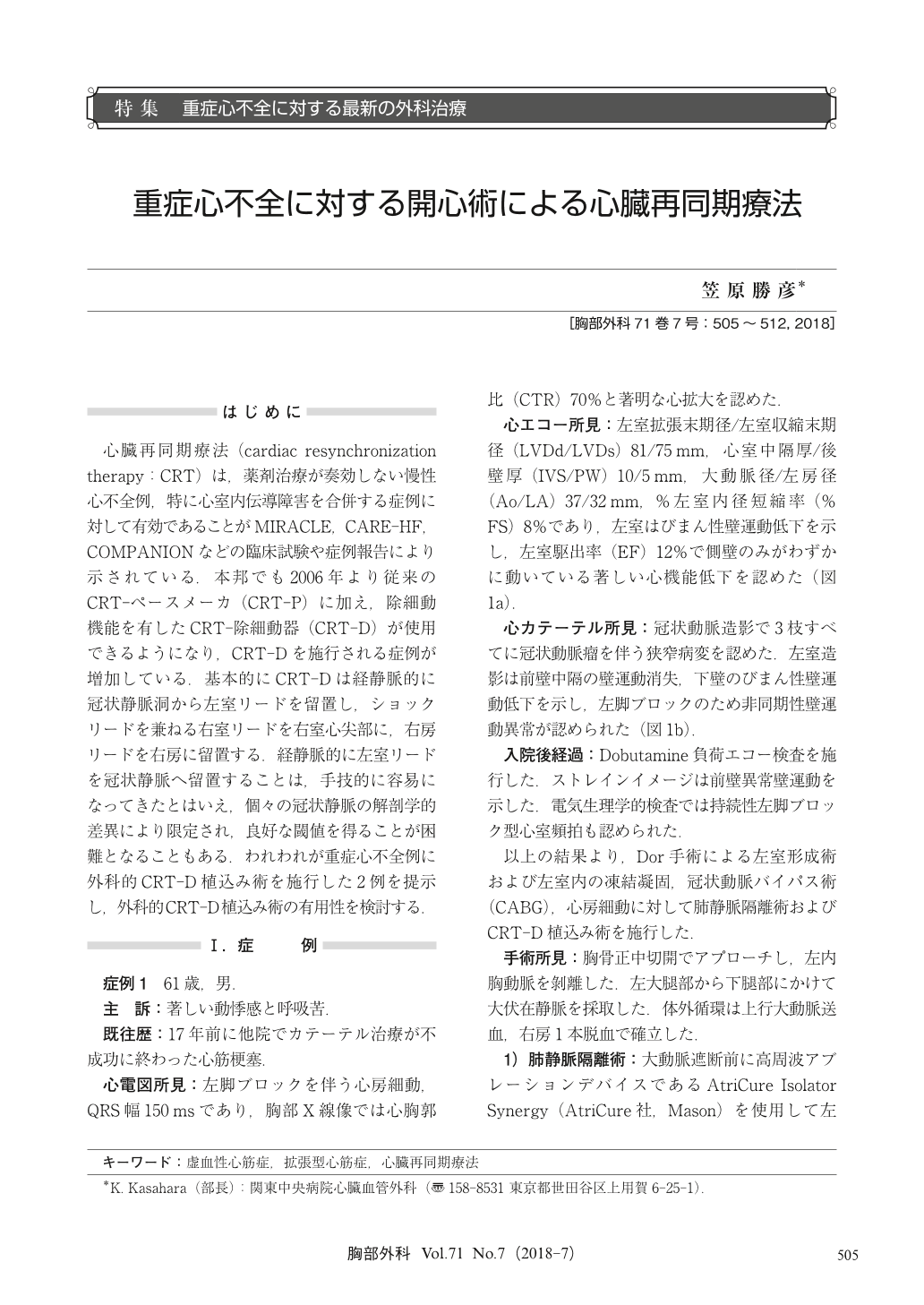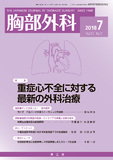Japanese
English
- 有料閲覧
- Abstract 文献概要
- 1ページ目 Look Inside
- 参考文献 Reference
心臓再同期療法(cardiac resynchronization therapy:CRT)は,薬剤治療が奏効しない慢性心不全例,特に心室内伝導障害を合併する症例に対して有効であることがMIRACLE,CARE-HF,COMPANIONなどの臨床試験や症例報告により示されている.本邦でも2006年より従来のCRT-ペースメーカ(CRT-P)に加え,除細動機能を有したCRT-除細動器(CRT-D)が使用できるようになり,CRT-Dを施行される症例が増加している.基本的にCRT-Dは経静脈的に冠状静脈洞から左室リードを留置し,ショックリードを兼ねる右室リードを右室心尖部に,右房リードを右房に留置する.経静脈的に左室リードを冠状静脈へ留置することは,手技的に容易になってきたとはいえ,個々の冠状静脈の解剖学的差異により限定され,良好な閾値を得ることが困難となることもある.われわれが重症心不全例に外科的CRT-D植込み術を施行した2例を提示し,外科的CRT-D植込み術の有用性を検討する.
We applied cardiac resynchronization therapy with an implantable cardioverter-defibrillator (CRT-D) and with concomitant cardiac surgery to 2 patients with left ventricular (LV) systolic dysfunction and dyssynchronous ventricular activation. A patient had severe ischemic dilated cardiomyopathy with coronary artery aneurysms (LV ejection fraction 12%, LV diastolic dimension 81 mm, LV systolic dimension 75 mm and atrial fibrillation, with complete left bundle branch block). Another patient had severe dilated cardiomyopathy with mitral valve regurgitation (LV ejection fraction 25%, LV diastolic dimension 75 mm, LV systolic dimension 61 mm atrial fibrillation, and complete left bundle branch block). Both epicardial LV leads were surgically implanted on the posterolateral wall. CRT-D achieved the resynchronization of the LV contraction, and improved cardiac function. The patients had an uneventful postoperative course and were discharged from hospital after operation. A key advantage of surgical epicardial lead placement is that lead placement is not confined to anatomic branches of the LV venous circulation as is the case with transvenous placement. CRT-D combined with cardiac surgery might be available for patients with LV systolic dysfunction.

© Nankodo Co., Ltd., 2018


